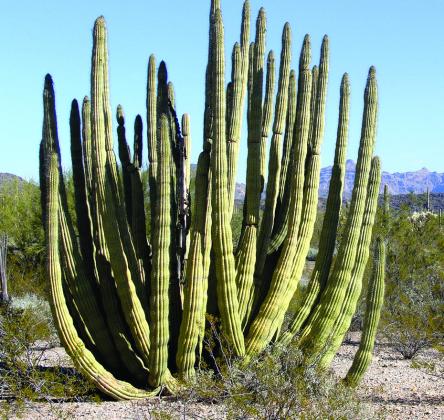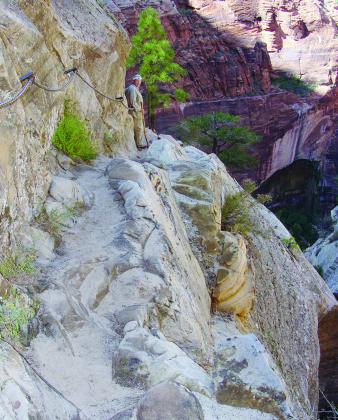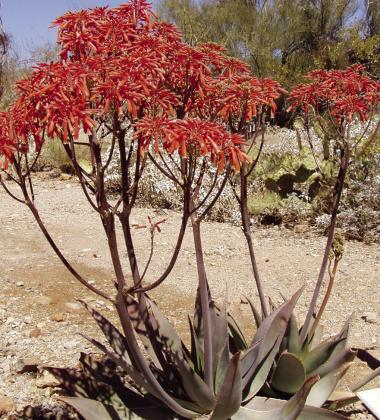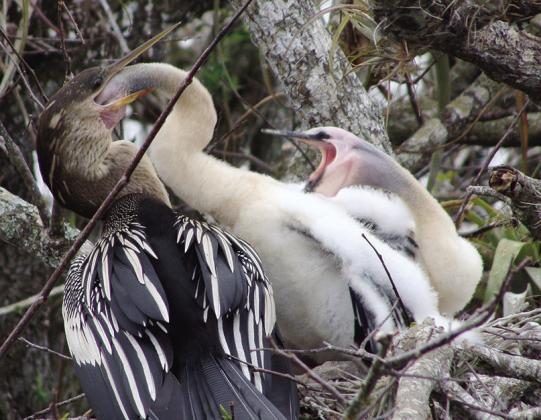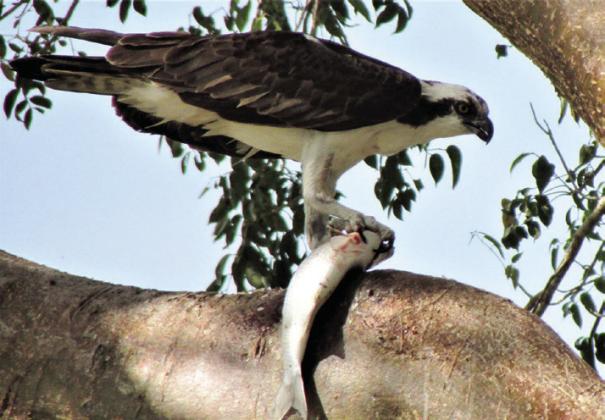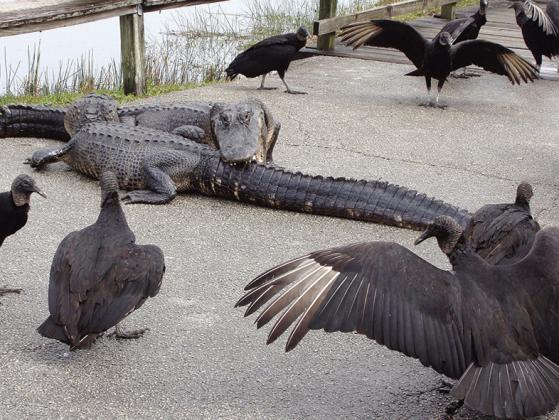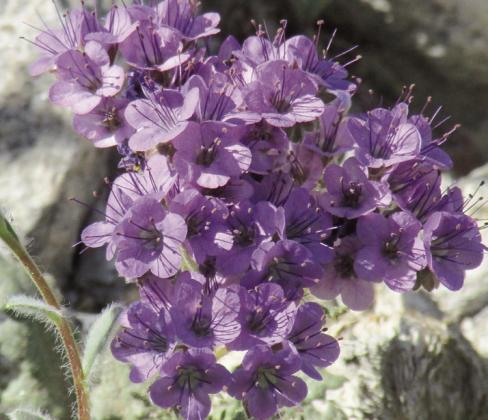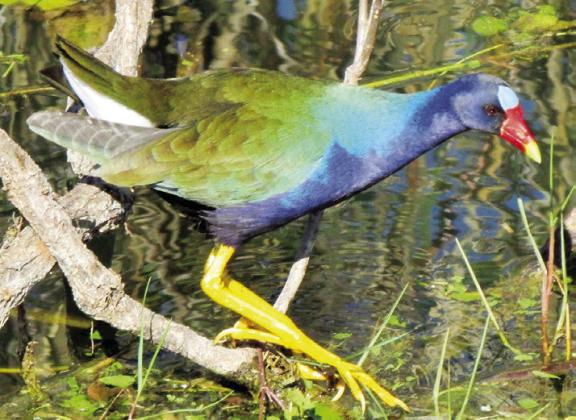Sponsored by Wood County Park District
ACCORDING TO YOGI, “Nobody goes there anymore. It’s too crowded.” As veteran travelers, Shirley and I understand. Over the decades we have experienced considerable growth in crowds at our favorite national parks. During COVID, especially, it seemed like everyone in the country was looking for ways to escape house arrest.
Once upon a time, and this is no fairy tale, we could arrive at virtually any park and just pick a campsite— even in Yellowstone. Attendance records are now set there every year, and reservations for lodging and campsites must be made six months in advance. Just to prove they have a sense of humor, some national parks take reservations 12 months in advance. If, like us, you include two or more parks in a trip, the logistics can get a little tricky.
This summer, we are headed to Pictured Rocks National Lakeshore in the Upper Peninsula then to Theodore Roosevelt NP, the site of his ranch in North Dakota, and on to Yellowstone and neighboring Grand Teton. We made reservations last summer for everywhere except Yellowstone because of that six-month schedule. By the time Yellowstone began accepting reservations, there was a gap of a couple days that we filled with a site in Shoshone National Forest about 35 miles outside the park.
The issue was further complicated because our first choice of campgrounds in Yellowstone was at Mammoth Hot Springs, which used to be entirely non-reservable. But the campground and lodge were closed by a devastating flood in 2022 that destroyed the road in that corner of the park and much of the infrastructure. Word was the campground might begin requiring reservations when they reopened. As of this writing, the park website still says the campground is “Closed. 2024 dates TBD.” Waiting for dates to be determined risked missing out on other options. So, in February we booked sites in Bridge Bay and Canyon. As retirees, we have more flexibility than most travelers.
Last summer, for example, we met a young couple from Germany at a remote forest service campground way up in the mountains. They were disappointed and annoyed by their experience in the US because they had looked forward to world-famous destinations. “How are we supposed to know a year in advance where we are going to be?”
Some travelers choose guided tours through agencies that decide when and where you go, what you see, where you stay, and where you eat. There is zero flexibility, but that is the price you pay for 100% certainty. Members of tour groups need not worry about when they will see Old Faithful or the Lower Falls of the Yellowstone and whether it will be from Inspiration Point or Artist Point. Parking is not a problem for tour buses that have reserved spaces. At either of the points, the viewing platforms are almost large enough to accommodate a busload of people packed tightly together. Those with sharp elbows can work their way through the crowd to get a selfie that might actually include the falls. Our strategy is to arrive while tour groups are still at breakfast.
Some national parks have adopted what you might think of as a hybrid alternative. Visitors arrive in their own vehicles but must use shuttle buses inside the park. This reduces traffic on park roads as well as competition for parking spaces. We have had good experiences with shuttles at Zion, Rocky Mountain, and Glacier parks. With shuttles, you can get off where you want with the expectation that another bus will come by every fifteen minutes. The challenge at Yellowstone would be keeping any sort of schedule. Herds of bison and elk often block the road for an indefinite length of time. Motorists are also known to stop right in the road to take pictures of bears or some unidentifiable big brown animal in the distance. So, shuttle service is still under consideration there.
Our family went to Zion for the first time in 1988. Crowds were not an issue when we climbed to the three Emerald Pools. The three-mile trail takes you behind misty waterfalls that spill over cliffs to create the pools. The climb itself is not particularly challenging, but the footing over and between boulders becomes increasingly uneven and difficult as you ascend. Some hikers turn back at the Lower Pool. Still more give up at the Middle Pool. That first time, we had the Upper Pool entirely to ourselves.
In 1994, competition for campsites and parking spaces was more noticeable and there were more people on all the trails. In 2009, Shirley and I arrived after Labor Day assuming that attendance would be down when kids returned to school. We hadn’t planned on hordes of other geezers adopting the same strategy. The campgrounds were full, but the ranger said, if we didn’t mind camping for free, we could go back a few miles and park on the banks of the Virgin River.
When we returned in 2015, the park was offering shuttle bus service between trailheads and major attractions. There was a steady line of hikers headed to the Emerald Pools. The once-deserted Upper Pool was occupied by a hundred or so gawkers. You really can’t blame them, but it is a somewhat less inspiring experience when you can’t hear the falling water over the excited babbling of the crowd.
From 2005 to 2012, our favorite winter destination was Everglades NP right at the southern tip of Florida. The weather was reliably pleasant, day trips to the Keys were convenient, and the park wildlife population was magnificent.
What Midwesterners think of as winter is called the dry season in Florida. After WWII, developers drained the swamp to control flooding and create resorts, retirement communities, citrus orchards, and sugar cane fields. In the park, birds and animals were forced to congregate in areas that still held pockets of water. They tolerated the presence of people because they had no choice.
For many years, the national park remained an under-appreciated gem. Though it is only an hour from Miami, we met numerous Floridians who were there for the first time. Campground reservations were not required, but we always counted on getting one of our preferred sites because they never filled. Though there was an official stay limit of 14 days, the staff encouraged us to hang around as long as we pleased.
Virtually every day, we walked the Anhinga Trail. Sometimes twice. It is paved along the canal at the beginning and becomes a slightly elevated boardwalk at Taylor Slough. It was easy to watch cormorants and anhingas swimming under water in pursuit of fish. Ospreys made dramatic plunges to emerge with prey in their talons. Wading birds, including the various species of herons, egrets, and ibises, fished patiently in the shallows. Birds nested in pond apple trees so close to the boardwalk that we could track the rapid progress of their offspring.
Alligators by the dozens dozed in the sun or pursued Florida gars and turtles. Large males bellowed to deter the competition and let lady gators judge their size. Sometimes the males came to blows. Or bites anyway. During the Great Gator Rumble, a pair of them disputed access to the lady gators for the entertainment of visitors and a flock of black vultures that called dibs on the loser.
Other reptilians included little anoles, green water snakes, banded water snakes, water moccasins, and rattlesnakes. One morning, fellow tourists informed us that there was a big rattlesnake right in the Gumbo Limbo Trail. “But don’t worry. The rangers have it roped off.” We were curious. How do you rope off a snake? It turned out that yellow plastic tape had been stretched across the trail. It was not to keep the rattlesnake in but the people out. The snake ignored us and continued its nap curled up in a patch of sunshine.
Then the federal government and state of Florida decided that draining the swamp had not been such a great idea after all. They invested $15 billion in restoring historic water levels. The glades are actually a very wide, slow, shallow stream that flows from Lake Okeechobee to the Gulf of Florida. The swamp had been drained by canals that diverted water to the Atlantic or the Gulf of Mexico. Even the Kissimmee River had been dredged and straightened to move water more efficiently. Restoration included putting the curves back in the river. Water flow had been blocked by roads and highways that acted as dams, so numerous culverts were installed under roads and portions of major highways were elevated to let more water through. There is now slightly deeper water everywhere in the national park so wildlife is dispersed in remote, inaccessible places.
Though we acknowledge the environmental benefits, those of us who remember the Good Ol’ Days still regret what turned out to be a greatly diminished experience. We stopped going there not because it was too crowded but because our primary motivation for visiting the Everglades no longer exists. But here’s the irony. Long Pine Key Campground, that never filled, now requires reservations and is full all winter. Go figure.
In 2012, after only a week in the Everglades, we continued to Gulf Islands National Seashore near Pensacola for a week and then just kept going west until we got as far as Death Valley in California. I know it sounds like a long way, but there is a lot to see and do in Louisiana, Texas, New Mexico, Arizona, and Nevada.
When we were ready to gradually make our way home, fellow campers in Death Valley suggested we take a little detour to Organ Pipe Cactus National Monument right on the Mexican border. My travel journal says “What a treasure! The desert is like Saguaro National Park on steroids, and the campground is quite nice especially after Death Valley. Took two nights in #34 to start. Sites are pull through with concrete pads. Splendid views across the Sonoran Desert to the mountains. A fantastic bargain at $6 with my geezer pass.” Two nights became four. It would have been more, but we were committed to being home for Easter.
Organ Pipe replaced the Everglades as our primary winter destination until 2022. As in the Everglades, the campground never filled up, so we were welcome to stay as long as we pleased. The Sonoran Desert is called the Green Desert because of the prolific assortment of cactus species and wildflowers. In addition, there is an abundance of birds and animals. The desert there is definitely not desolate.
One of our favorite trails climbs a ridge where it runs along the crest before descending and circling back around. From the ridge top, we could see the twin border towns of Lukeville, AZ and Sonoyta, MX. We went to Sonoyta with park volunteers and rangers for dining and groceries. Groceries, often American brands with Spanish labels, were cheap, but we think there are better Mexican restaurants right here in Toledo.
When we went to Mexico in 2021, it was like running a gauntlet of men lined up along the streets. In earlier years, Border Patrol agents arrested an occasional drug smuggler inside the park. In ‘21, agents were overwhelmed by the sheer number of people entering illegally. It became physically impossible for them to separate harmless immigrants from those carrying fentanyl or engaged in human trafficking. So, as Yogi said, we don’t go there anymore because, thanks to the cartels, “It’s too crowded.”
The past three winters, we have returned to Florida. In 2022, we made a one-day visit to the Everglades just for old times’ sake and to confirm that the wildlife really was gone permanently. Geezers are notorious for declaring that everything was better back in the day. Sometimes that is actually true. Most of our time in Florida is now spent just north of Orlando at Alexander Springs, Juniper Springs, Salt Springs, and Clearwater Lake. I know. It’s a rough life, but, if you don’t weaken, it can still be just a walk in the park.
You might want to see more of his stories and photos at AnotherWalkinthePark.blogspot.com. ✲

